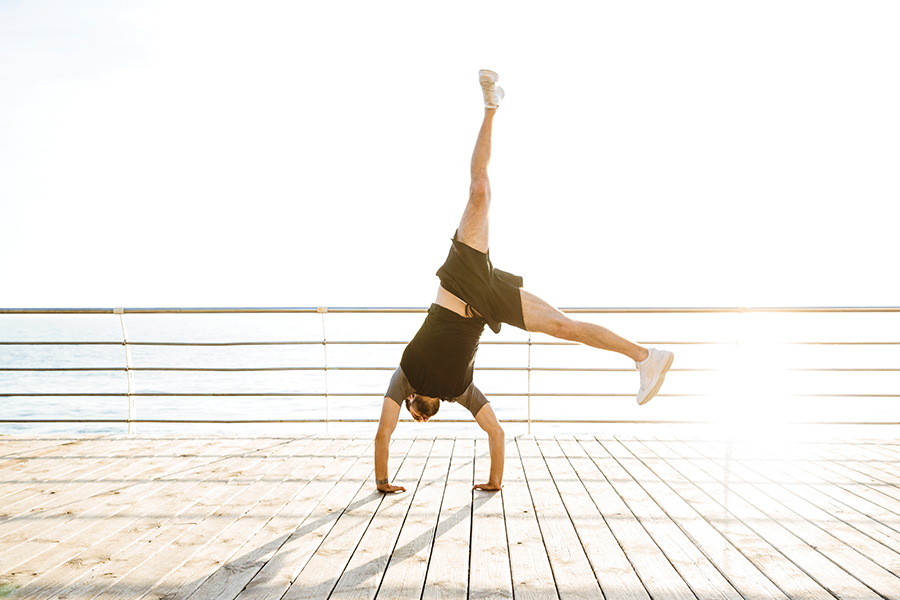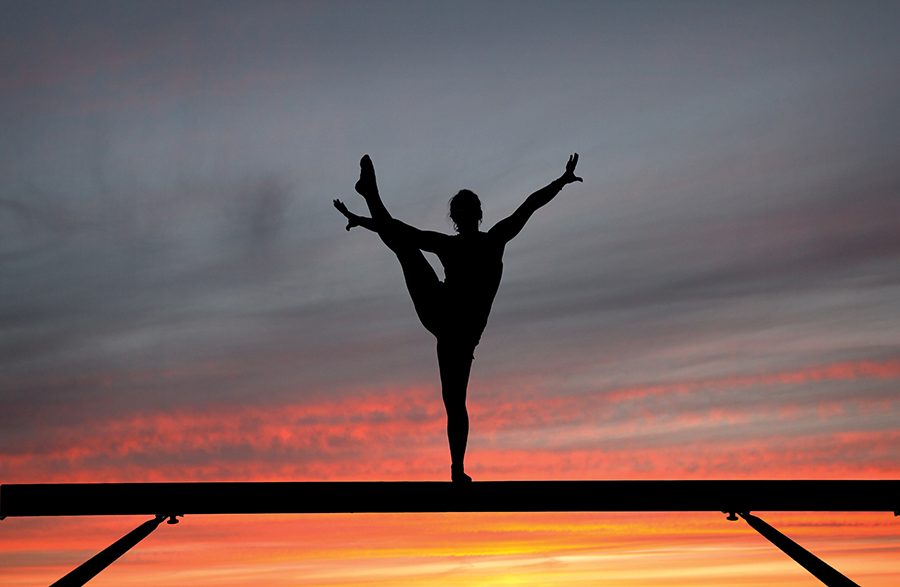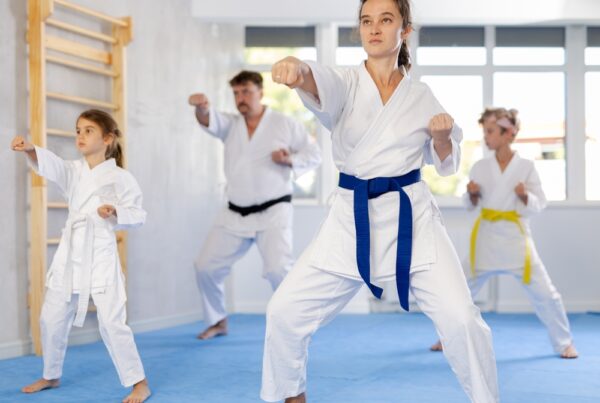When most of us hear the word "gymnastics" we immediately think about gold-winning Olympic gymnast Simone Biles flying through the air, flipping and twisting more times than we can count.
Luckily, you don’t need to be an elite-level athlete fearlessly launching over vaults and swinging around bars to participate in the sport. The core foundations of gymnastics — balance, strength, flexibility and mental focus — are skills that can be learned, practiced and mastered even as an adult. In fact, over the last couple of years, amateur adult gymnastics has become increasingly popular as a challenging full-body training method.
The International Gymnastics Federation identifies eight official disciplines of gymnastics. Here’s a quick look at each.
Women’s Artistic Gymnastics:
This is one of the most popular types of gymnastics and is a feature sport in the Olympics. Women compete on four apparatuses — vault, uneven bars, balance beam and floor exercise — while showing flexibility, strength, balance and, of course, artistry.
Men's Artistic Gymnastics:
Male gymnasts compete on six apparatuses — floor exercise, pommel horse, still rings, vault, parallel bars and horizontal bars — in this widely popular discipline. Like the women’s competition, men must also show strength, precision, balance and artistry while flying through the air.
Rhythmic Gymnastics:
An apparatus such as a hoop, ball, club, ribbon or rope is thrown into the air while the gymnast performs acrobatic moves before catching the object. The routine is set to music and requires extreme concentration and precise timing.
Trampoline:
This discipline became part of the Olympics in 2000 and is all about high-flying, thrilling moves as athletes launch themselves as high as possible into the air.
Tumbling:
Athletes jump, twist and flip down a 25-meter long track as they are judged on the difficulty and form of their routine.
Acrobatic Gymnastics:
A team of two to four gymnasts performs routines that consist of incredible balance, strength and trust.
Parkour:
Participants (or traceurs) use elements in an environment to move from one point to the next in the most efficient and fastest way possible. Moves can include climbing over fences and jumping over obstacles.
If those all sound a little too daunting, don’t worry, the last type is made for anyone curious about becoming a gymnast.
Gymnastics for All:
As the name implies, this type provides opportunities for all ages and skill levels. Gymnastics for All focuses on the general skills needed for the sport including important movement patterns, as well as overall health and fitness.

Back to Basics
Before you go for the round-off back handspring, it is important to master the foundational exercises and skills. Gymnastic exercises are focused on making the body as strong and flexible as possible. Here is a quick overview of some of the common exercises to get you in tiptop shape.
Though advanced skills will vary depending on your goals, some foundational skills include handstands, backbends and forward/backward rolls. Splits and handstands are also critical foundational moves as you move on to more advanced levels.
Warmup — Foam rolling, kneeling rockers and bridges
Stretching — Pike stretch, straddle stretch and inverted leg stretches
Core — Hollow body hold, arched body hold and v-ups
Strength — Calf raises, pull-ups and chin-ups
If you plan on doing somersaults or flips in the future, you can begin to work on perfecting your tuck too!
Just remember, to master any of these skills properly and safely, find a coach to help guide you.
Getting Started
Taking an in-person class is the best way to get started. Most adult gymnastic classes are just as much about having fun as they are about learning and can be a great way to make new friends! A major bonus to classes is the access to proper equipment and a knowledgeable coach to guide you along the way.
And don’t worry, leotards aren’t typically required, so shorts or leggings with a t-shirt will work just fine!
Gymnastics Centers
Use the USA Gymnastics finder tool to locate a club in your local area. usagym.org/pages/find/gym.html
Crossfit Gyms
Gymnastics is one of the three foundational modalities of CrossFit. Check out your local CrossFit gym and try booking a class that’s focused on the gymnastics aspect of this training method.
The YMCA
Some YMCAs may offer foundational gymnastics courses for adults. Though they may not have the big foam pit, they'll still have other equipment and can help you build a strong foundation for success.
If you can’t find any in-person opportunities in your area, online classes can be a great resource for helping you understand the basics and giving you a general framework for exercises.
Simone Biles’ MasterClass: Gymnastics Fundamentals
https://www.masterclass.com/classes/simone-biles-teaches-gymnastics-fundamentals
Gymnasticbodies
Gymnasticbodies offers free workout samples for be - ginners. You can also subscribe to the premium version to access different series based on your skill and fitness level. Gymnasticbodies.com
Competition
With the popularity of adult gymnastics growing, there are more opportunities to compete. Like the class - es, most are geared towards the recreational side of gymnastics, making meets much more attainable and enjoyable for participants. Who knows, maybe you’ll come home with the gold!


